Milk Protein: How to Introduce Your Baby to this Potentially Allergenic Food
- The one single thing you can do to lower your baby’s risk of cow’s milk protein allergy (...which is the most common pediatric food allergy)
- Why exclusively breastfed babies especially benefit from early introduction of milk foods
- How to pick the best type of yogurt for self-feeding and why you can totally skip baby food yogurts
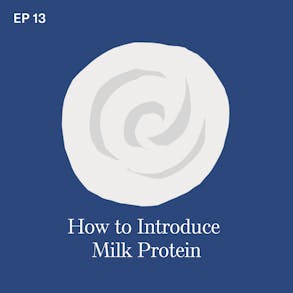
LISTEN TO THIS EPISODE
Episode Description
What if my baby has a milk allergy or can’t eat dairy foods? The only way to know if your baby is allergic to cow’s milk protein is to offer them that food. In this episode we look at milk allergy and how to prevent it, including the easiest way to offer your baby this potentially allergenic food and why it’s particularly important for exclusively breastfed babies.

Links from This Episode
- Baby-Led Weaning with Katie Ferraro program with the 100 First Foods™ Daily Meal Plan, join here: https://babyledweaning.co/program
- Baby-Led Weaning for Beginners free online workshop with 100 First Foods™ list to all attendees, register here: https://babyledweaning.co/baby-led-weaning-for-beginners
Other Episodes Related to This Topic
- Episode 285 - Are Plant-Based Milks Safe for Babies?
- Episode 286 - Is My Baby Dairy Intolerant? Food Protein Induced Allergic Proctocolitis (FPIAP) with Marion Groetch, MS, RDN
- Episode 368 - Using a Milk Ladder for Babies with Dairy Allergy with Carina Venter, PhD, RD
Resources and Research
- Fiocchi, Alessandro et al. “Food allergy and the introduction of solid foods to infants: a consensus document. Adverse Reactions to Foods Committee, American College of Allergy, Asthma and Immunology.” Annals of allergy, asthma & immunology : official publication of the American College of Allergy, Asthma, & Immunology vol. 97,1 (2006): 10-20; quiz 21, 77.
- Katz, Yitzhak et al. “Early exposure to cow's milk protein is protective against IgE-mediated cow's milk protein allergy.” The Journal of allergy and clinical immunology vol. 126,1 (2010): 77-82.e1.
- Onizawa, Yutaro et al. “The Association of the Delayed Introduction of Cow's Milk with IgE-Mediated Cow's Milk Allergies.” The journal of allergy and clinical immunology. In practice vol. 4,3 (2016): 481-488.e2.
- Perkin, Michael R et al. “Randomized Trial of Introduction of Allergenic Foods in Breast-Fed Infants.” The New England journal of medicine vol. 374,18 (2016): 1733-43.
- Perkin, Michael R et al. “Enquiring About Tolerance (EAT) study: Feasibility of an early allergenic food introduction regimen.” The Journal of allergy and clinical immunology vol. 137,5 (2016): 1477-1486.e8.
- Tran, Maxwell M et al. “Timing of food introduction and development of food sensitization in a prospective birth cohort.” Pediatric allergy and immunology : official publication of the European Society of Pediatric Allergy and Immunology vol. 28,5 (2017): 471-477.

Latest Episodes
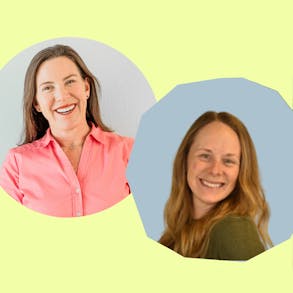
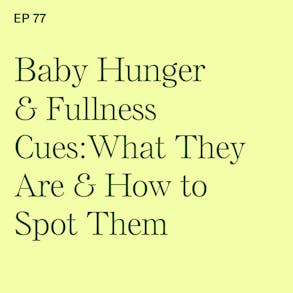
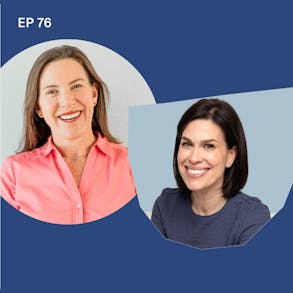
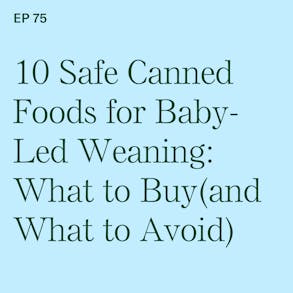
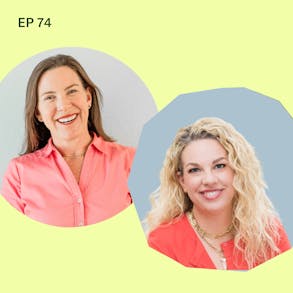
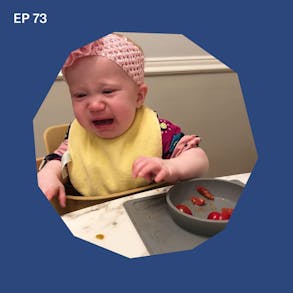
Katie Ferraro (0s):
And you guys cow's milk protein is the easiest allergenic food to introduce to your baby. It's why I always do at first. I kind of think of it as like the gateway allergenic food. Cause if your baby's had any formula, they are cow's milk protein based. So your baby's actually already been exposed to it. It's a little bit trickier for your exclusively breastfed baby, but still the easiest allergen to start with. Hey there, I'm Katie Ferraro, Registered dietitian, college nutrition professor, and mama of seven specializing in Baby-Led Weaning. Here on the Baby-Led Weaning Made Easy podcast I help you strip out all of the noise and nonsense about feeding, leaving you with the competence and knowledge you need to give your baby a safe start to solid foods using Baby-Led Weaning.
Katie Ferraro (48s):
Hello and welcome back to to the Baby-Led Weaning made easy podcast. This is Katie Ferraro, registered dietitian and mom of seven specializing in Baby-Led Weaning. And today we are getting specific on one of the allergenic foods. We're talking about milk, protein, and how to introduce your baby to this potentially allergenic food. Now, if you are looking for the easiest allergenic food to start with it's milk protein, I call this one like the practice round, because not only is it easy because it's a readily accessible food, it's a food babies love. I love to teach babies how to feed themselves yogurt as a way to introduce the baby to the potentially allergenic food cows, milk protein.
Katie Ferraro (1m 35s):
Now, I like to start every episode with a Baby-Led Weaning tip of the day. So today's tip is you guys, your baby can start eating foods that contain cows milk protein as soon as he begins eating solid foods, which is at or around the six month mark plus when the baby is showing the other signs of readiness to feed. Now there's old guidance out there. You might have heard a long time ago or your mom or your mother-in-law tells you, you know, we used to be told not to introduce dairy until after age one. And actually when I, myself was studying to be a dietitian, which I like to think it was not that long ago, but it was a long time ago. Now we actually learned to counsel parents to delay the introduction of dairy foods until after one.
Katie Ferraro (2m 21s):
But we now know that that's not true. We actually have more recent studies that show lower rates of allergy to milk when or sorry, lower rates of allergy to certain foods and milk was included in some of these studies when those allergenic foods were introduced early. Although in certain studies, I should point out that that reduction in allergy rate is not considered to be statistically significant, but the point is there is no clinical data or research that says it's helpful to prolong. So the data that shows that we introduce early to help reduce risk while it's not always super strong in every study, there are no studies that say it's a good idea to delay it.
Katie Ferraro (3m 2s):
Delaying it does nothing to prevent the onset of milk allergy in the past. That's why pediatricians and researchers used to tell parents don't introduce allergenic foods because they thought, but unfortunately that wasn't steeped in data that wasn't evidence-based. So we're looking at more recent data, which says it looks like it's better to introduce it early, to prevent milk allergy than it is to hold off on necessarily. We also need to consider the other factors that there's a lot of other good stuff in foods like yogurt, which is what we're going to focus on today, besides just the protein, which is where the potentially allergenic components would be yogurt, for example, contains vitamin A, D, calcium, other minerals. And I love it because it's a naturally pureed texture food, which does work for Baby-Led Weaning.
Katie Ferraro (3m 47s):
If you do the preloaded spoon technique, your baby can learn to feed himself via spoon with a food like yogurt, because as smart as your baby is like, they don't need to go through life needing to know how to eat yogurt with their hand. They're going to try to eat it with their hand at first, but we're going to help them learn how to use a spoon so they can get that allergenic food. So if you hang tight at the end of the episode, I'm going to talk a little bit about how you choose the best type of yogurt for Baby-Led Weaning. And before we dive in, I want to tell you guys a quick story about someone will call her Katie Ferraro for the sake of the story who, and I'm not ashamed to admit this now, but when I started solid foods with my oldest daughter, I had always heard, oh, we don't give babies cows milk.
Katie Ferraro (4m 32s):
I was like, I'm actually a college nutrition professor and was teaching nutrition throughout the life cycle at this time. But it didn't really click for me until I had my own baby. I was like, wait a minute. I thought we're not supposed to feed babies cows milk. How come I sometimes see babies eating yogurt? Isn't that made from cow's milk? Well, what I realized was, and you probably already realized this. I don't know why it took me so long, but the guidance is we don't substitute fluid, breast milk or formula for cow's milk until after the baby is one, because cows milk is not sufficient to meet our baby's needs like breast milk or formula is prior to the age of one, but it's totally okay.
Katie Ferraro (5m 12s):
When your baby starts solid foods to offer foods that contain milk, we just don't stop the formula of the breast milk, right? Especially in the earlier part of starting solids, most of your baby's nutrition is still coming from breast milk or formula don't mess with that. We don't do cows milk as a replacement for breast medical formula until after one, but totally fine to feed your baby yogurt or to offer foods where milk is used as an ingredient or a baked good. Like I remember looking at like a corn bread recipe and being like, gosh, I wonder if my baby can have this. It looks like there's milk solids in here. Not even realizing that this was the baby. I don't know. So this is a baby who was on half breast milk, half formula. By the time we started solid foods and infant formulas are cow's milk protein based like, I don't know, mom brain, maybe.
Katie Ferraro (5m 58s):
So anyway, that, you know, you guys might have known, I didn't know that at the time now, six babies later, and having helped tens of thousands of families get a safe start to solid foods. It's like totally duh that you can feed your baby yogurt, but I have to take myself back to that place where, hey, I, myself, didn't get that. I thought you weren't supposed to feed cows milk. Doesn't yogurt come from cows milk. Again, the guidance is don't sub the breast milk or formula for the cows milk till after one. And we'll talk more about how we transition to cows milk in a different episode today, we want to talk about introducing your baby early to cow's milk protein, kind of, especially for your exclusively breastfed babies. Because for those of you guys that have had infant formula, most infant formulas have cows milk protein as a base.
Katie Ferraro (6m 43s):
So your baby's actually already been exposed to this. So I kind of call it like, you know, for the formula babies, feeding your baby yogurts, like a soft launch into allergenic foods, you might think of it because they've really already had the cows milk protein. So for the exclusively breastfed babies though, cow's milk protein is new, but this is a kind of an episode for all babies. As we start solid foods, how can we use yogurt as a way to introduce the potentially allergenic food, milk protein? So first a few stats about milk allergy. Okay. This is the most common food allergy in children. So when it comes to the introduction of allergenic foods, I like to start in the first three weeks I like to do. And in no particular order milk, egg, and peanut, those are the three most common pediatric food allergies do them up front.
Katie Ferraro (7m 28s):
I always do yogurt milk first because it's the easiest one for babies. So there's about two and a half percent of kids under age three are allergic to milk. If you're going to, if infants are going to get an allergy or kids are it's going to happen in the first year of life, eventually most kids are going to outgrow it. There are blood tests that can measure antibodies to determine if your child is likely to outgrow a milk allergy, depending upon if it is either an IgE mediated or non IgE mediated allergy. So again, it's okay to use milk as an ingredient cooking, but only if your baby does not have a severe cow's milk protein allergy. So I want to mention, I said allergy and a lot of parents use the term allergy and intolerance interchangeably when they're actually two very different things.
Katie Ferraro (8m 12s):
So a lot of you guys may have had the situation where when your baby was younger, especially if you were, when you were breastfeeding, your baby was intolerant to dairy and you had to refrain from dairy foods when you were breastfeeding. Okay. That does not mean your baby is allergic. Okay. Fewer intolerant, many babies have cow's milk, protein intolerance, and many, most of those babies outgrow that intolerance. By the time they start solid foods and are able to tolerate dairy. No problem. If your baby has an intolerance to cow's milk protein, that's very different than having an allergy. So again, it's important to note the difference between cows milk protein intolerance and cow's milk protein allergies, and keep in mind that a lot of people, when they're saying allergy really mean intolerance.
Katie Ferraro (8m 56s):
So it is important to consult with your own pediatrician and determine does the baby have the intolerance or the allergy for babies that have a mild or moderate cow's milk allergy, they may be able to re-introduce dairy down the road. Okay? These are babies who have a non IgE mediated cow's milk allergy. Now, if your baby's already been diagnosed with an severe cow's milk allergy, so an IgE mediated cow's milk allergy, these babies will have a severe, immediate allergic reaction to cow's milk protein. This is not an episode for you guys. You, you should not be feeding dairy foods if your baby has a severe allergy, but if you don't know a lot of times, people just throw around the word allergy. You ask a few more questions you realize, oh, I think they're really talking about intolerance.
Katie Ferraro (9m 41s):
It's a good idea to consult with your pediatrician. So let's talk about introducing cow's milk protein to the baby. Again, I think yogurt is one of the best ways to do that. We are going to transition our babies to whole cows milk as a fluid drink at or after shortly after the one year mark. But again, it's okay to cook with milk early on. It's okay to serve your baby yogurt. So I like yogurt for Baby-Led Weaning. And some people are like, wait, what? Yogurt is a puree. And I thought with Baby-Led Weaning, we bypass purees. You guys keep in mind, purees are an important texture for your baby to learn how to master the thing is, they're just not the only texture that your baby can eat too often with traditional spoon-feeding.
Katie Ferraro (10m 25s):
So when we're not doing Baby-Led Weaning and the parent or the caregiver is pushing the spoon into the baby's mouth. That's not Baby-Led Weaning with that. Okay? You've taken away your baby's ability to feed themselves, but you can honor the principles and the philosophy of Baby-Led Weaning. If you do this preloaded spoon approach, that's where you would put the yogurt in the bowl, you would scoop the yogurt on to the spoon for your baby. You would hand the Baby-Led Weaning spoon to your baby handle side. First, you would help guide your baby spoon to mouth if necessary. But after a few times, they get the hang of it and they start bringing the spoon to their mouth. Now, I am not claiming that early on your baby's going to eat very much of this yogurt.
Katie Ferraro (11m 10s):
They are going to wear it. I know in our own household, I first did Baby-Led Weaning with my quadruplet babies. And I'm not a big bather. Like I know some of you guys be with your babies every day. And I think that's awesome. I just never had the capacity to do that, but yogurt, that always fell strategically on bath day because yogurt is such a pain to clean up. So it's a sometimes food in my house for babies, because I don't bath them that often, but just be aware it's messy, but that's okay. Our goal with Baby-Led Weaning is not to prevent the mess. We can do things to minimize the mess. We'll talk about that. But the goal is to give your baby the opportunity to learn how to eat purees, an important texture for your baby to master.
Katie Ferraro (11m 53s):
It's just not the only one your baby can eat. Yogurt is a great way to introduce your baby to cow's milk protein, do that preloaded spoon approach. The Baby-Led Weaning spoon that I like and use both at home and in my practice is the tiny spoon from EZPZ. If you go to ezpzfun.com and you search their tiny collection, the tiny spoons come in a two-pack. They were designed by a speech-language pathologist and feeding expert. A lot of very unique design features that you will not find in other spoons. They've got the right sized bowl for the baby small mouth. They've got sensory bumps that teach the baby how to basically not gag themselves with this spoon. They've got an appropriate size and shaped handle everything right, is going on in this spoon.
Katie Ferraro (12m 35s):
Whereas a lot, the most other spoons out there, they have bulls that are too wide or too big or too deep. They have handles that are too long. The baby ends up gagging themselves. They can't appropriately pick the spoon up and feed themselves and parents think, oh, well then I'll just pick this spoon up and feed it to the baby. But those of you who have studied Baby-Led Weaning know that babies can feed themselves age appropriate foods provided at their six months of age or older and demonstrating the other signs of readiness to feed. So you can let your baby feed themself yogurt. Now, what kind of yogurt? That's always the question I teach these online workshops, baby called Baby-Led Weaning for Beginners. There's a Q and A section. And like the, I can always just in the top of my head and like, know what kind of group it is because what questions they're asking.
Katie Ferraro (13m 20s):
And one of the most frequently asked questions. When I start talking about feeding your baby yogurt as the first allergenic food, I like to do it. The first week of Baby-Led Weaning. I do it on day five. So I advocate for introducing five new foods per week. I do a fruit on day one, a vegetable on day two, a starch food on day three, a protein food on day four. And then on day five, I do a challenge food. While the challenge foods include the allergenic foods, plus some trickier textures and more complex flavored foods. The first challenge food I like to feed the baby is that allergenic food milk, which I do from yogurt. So in the first week of eating solid foods, your baby will be eating yogurt. And as soon as I'm talking about that, people start asking questions. Well, what type of yogurt can it be?
Katie Ferraro (14m 4s):
Greek yogurt? Can it be Icelandic yogurt? And you guys know that yogurt aisle at the grocery store is wackadoodle, right? Like it's ridiculous. There's so much junk in the yogurt aisle. That at first it seems overwhelming, but actually kind of easy because there's just a few parameters for picking a good baby yogurt that once you get it down, you just go right to that brand and grab that one first and foremost, the yogurt that you offer your babies should be a whole milk, full fat yogurt. We don't do reduced fat dairy products for babies less than two years of age. Okay? So always go whole milk, which has full fat that has extra fat that your baby needs for brain development. Their brain is still developing. Give them fat. You can do that in yogurt. Now, secondly, the yogurt should be plain.
Katie Ferraro (14m 44s):
When I say plain, I don't mean vanilla. A lot of people think vanilla is plain. The last week has vanilla yogurt. So good. Yeah, of course. It's good because it's packed full of added sugar. We want to choose plain yogurt because it has no added sugar. So you guys the best to know that parents are going to say, well, it says sugars. When I look at the yogurt. Well, because it's made from cow's milk and cow's milk contains lactose, which is a milk sugar. Yes. There's technically sugar in yogurt, but that's not added sugar. We refrain from feeding babies, added sugar. And ironically, a lot of the baby yogurts out there have added sugar. Parents will say, oh, but it's organic sugar who cares? Organic sugar is still sugar.
Katie Ferraro (15m 25s):
Added sugars are not appropriate for babies, even if they're organic. Okay. So steer clear of baby yogurt products. You don't need them because your baby can eat regular, full fat, whole milk, plain yogurt. Yes. It can be Greek yogurt. If you want to. Sometimes those are really thick. So it kind of like mash it up a little bit to make it a little bit easier for the baby. Cause we don't want it to get stuck on the roof of their mouth, but we want no added sugar and we want full fat, whole milk yogurt. You have to do a little sleuthing in the grocery store, but I'll tell you the easiest way to pick this yogurt is to read the ingredient list. Don't get hung up on the nutrition facts panel. If it says added sugars and there's something there, go get a different yogurt, but not all food labels say or have to disclose added sugars yet.
Katie Ferraro (16m 6s):
So just look at the ingredient list. If it says milk and then a bacteria you can't pronounce. That means it's real yogurt. That's great. Don't worry about extra probiotics. Yogurt by itself is a naturally containing probiotic food. You don't need to go buy an extra probiotics for your baby. Just do yogurt and then do it early and often. So you can't just do it once and say, oh great. We fed our baby yogurt that's the end of it. Do it a few times or offer other cows milk protein containing foods during that first week when you're trialing that particular allergenic food waiting until the following week. So I usually do my allergenic foods on Friday. That's the fifth day of the week where I do the challenge category.
Katie Ferraro (16m 47s):
The first nine weeks of Baby-Led Weaning. If you do one allergenic food, every Friday, you're waiting seven days between the allergenic foods, but you don't need to wait three to five days between introducing low-risk foods the other four days of the week. If you want to learn more about this, go back to episode number 12, it's called why you don't need to wait three to five days between trying new foods. And if all of this allergenic stuff is new to you, another episode that you might like is episode number 11, how to introduce allergenic foods to your baby. So that's it. It's pretty straight forward with how to introduce milk protein to your baby. I like to do it first. If you guys are interested in getting some of those spoons that I talked about with yogurt, you got to feed it out of a bowl.
Katie Ferraro (17m 29s):
You should always feed your baby food out of a bowl or a matte. I love the silicone suction mats from easy peasy. If you go to easy-peasy fund.com, the tiny bowl, that's a five ounce one. It's got an oval footprint works well with the tiny spoon. I love these for Baby-Led Weaning for trialing new foods. You can actually get 10% off everything at ezpzfun.com with the code Katie10 that's one zero, a link. All of these products up in the show notes for this particular episode, which is blwpodcast.com/13. If you guys want to learn more about this whole five step feeding framework and my 100 First Foods approach where you feed your baby five new foods a week, I teach a free online workshop every week called Baby-Led Weaning for Beginners.
Katie Ferraro (18m 16s):
How to get your baby to try 100 foods before turning one, without you having to spoon feed purees or buy pouches, right? Cause periods are cool. We just don't feed them to the baby. The baby can feed them themselves. And pouches are not cool because your baby can eat intact whole versions of everything that they smash up with apple sauce and put in a pouch and charge you $3 for yogurt's a cool puree though, because it's a naturally pureed food. I like foods like unsweetened applesauce or whole milk, full fat yogurt, or oatmeal or other hot cereals and soups and stews. Your baby does need to learn how to eat those textures. They can learn how to do a spoon and feed themselves doing that. I'll teach you more about that on the workshop. If you go to the show notes, you can click the link to sign up for this week's workshops.
Katie Ferraro (19m 1s):
And I give everyone on that workshop, a copy of my 100 First Foods list. So you can get busy knocking these foods out for your baby, including the easiest allergenic food to introduce, which is milk protein. Show notes are at blwpodcast.com/13. Thanks for listening guys. See you next time. Bye now!
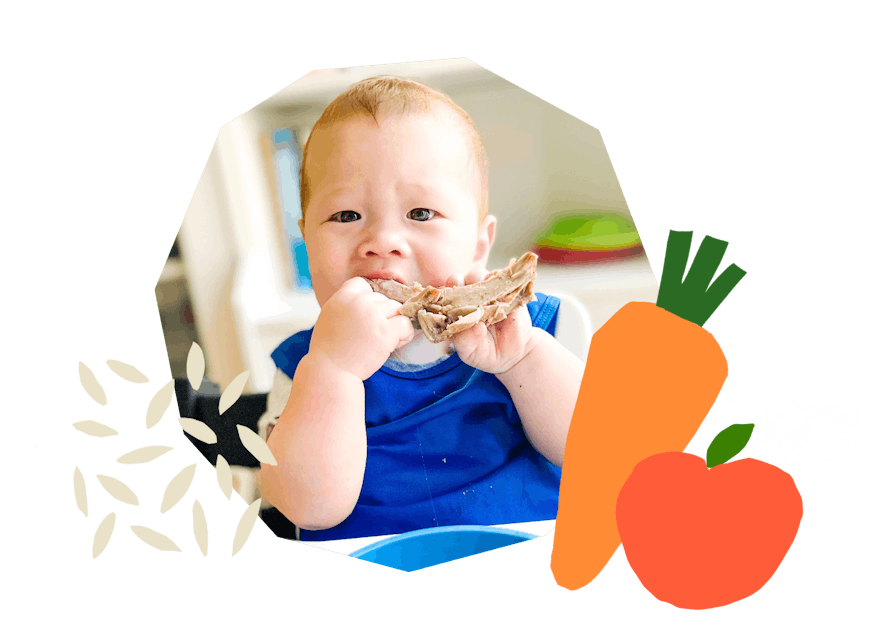
The Program Baby-Led Weaning with Katie Ferraro
A step-by-step digital program for starting solid foods safely and navigating the original 100 FIRST FOODS™ meal plan with baby-led weaning.
 EXPERT-LED, PROVEN APPROACH TO EATING REAL FOOD
EXPERT-LED, PROVEN APPROACH TO EATING REAL FOOD CONCISE VIDEO TRAININGS TO MASTER BABY-LED WEANING
CONCISE VIDEO TRAININGS TO MASTER BABY-LED WEANING 100 FIRST FOODS DAILY MEAL PLAN WITH FOOD PREP VIDEOS
100 FIRST FOODS DAILY MEAL PLAN WITH FOOD PREP VIDEOS
Baby-Led Weaning for Beginners Free Workshop
Is your baby ready to start solid foods, but you’re not sure where to start? Get ready to give your baby a solid foundation to a lifetime of loving real food…even if you’re feeling overwhelmed or confused about this next stage of infant feeding.
Get baby-led weaning recipes and tips delivered to your email inbox.

